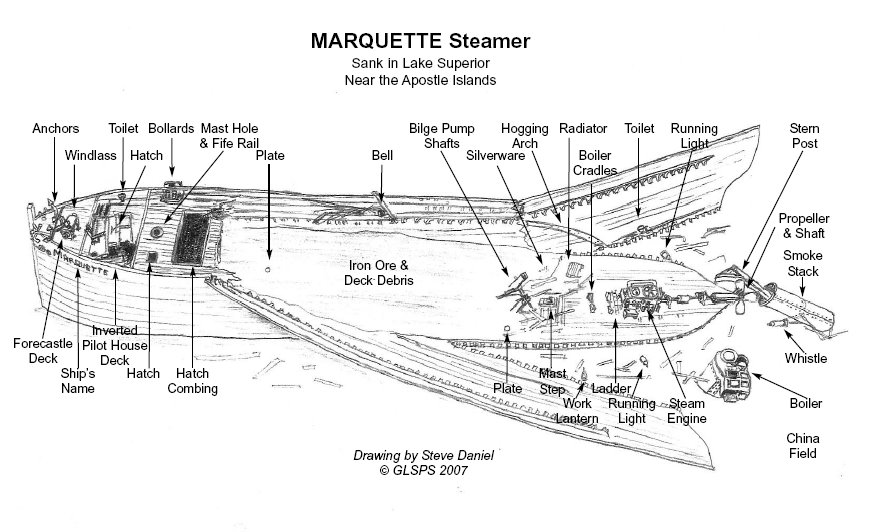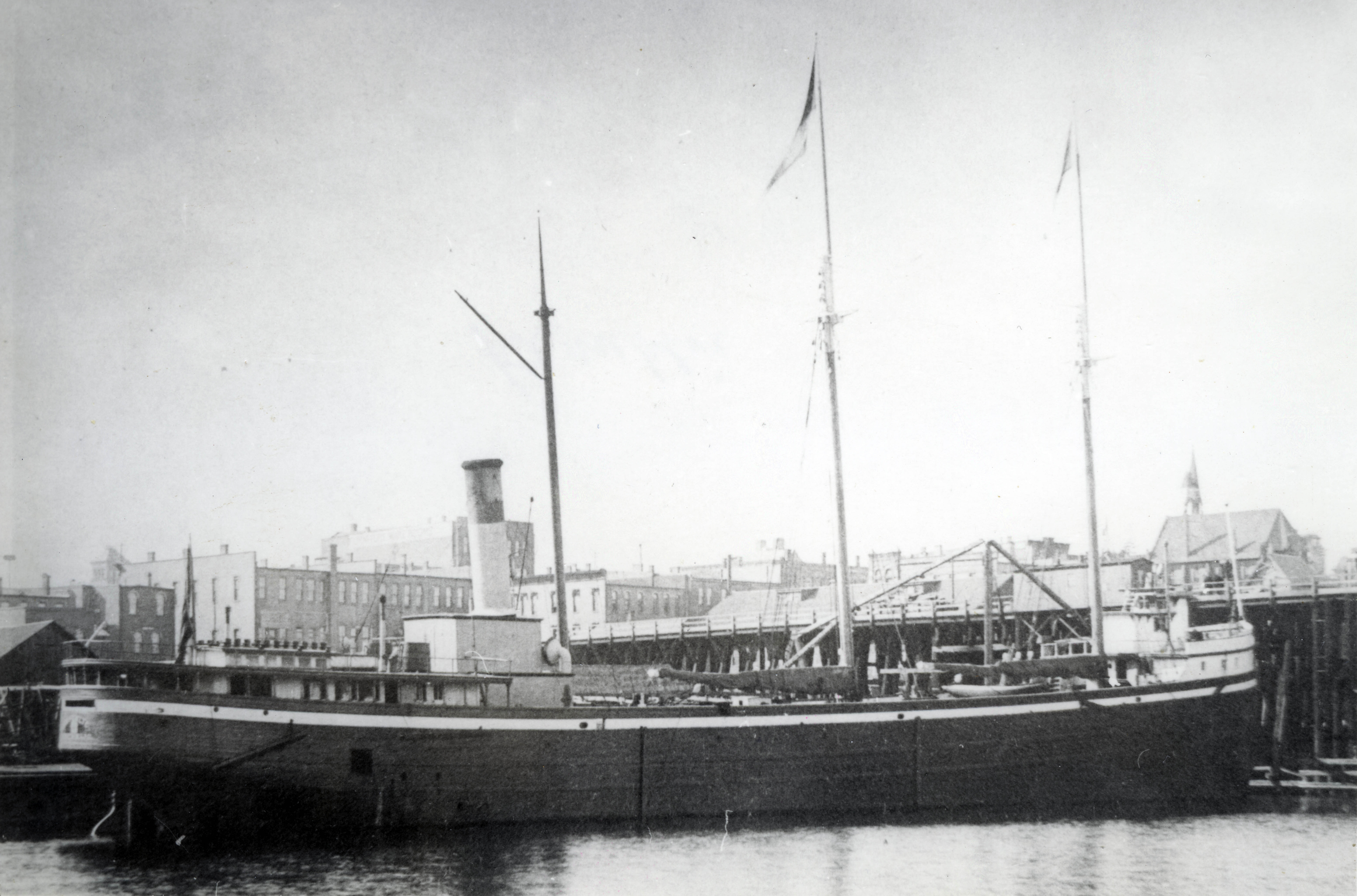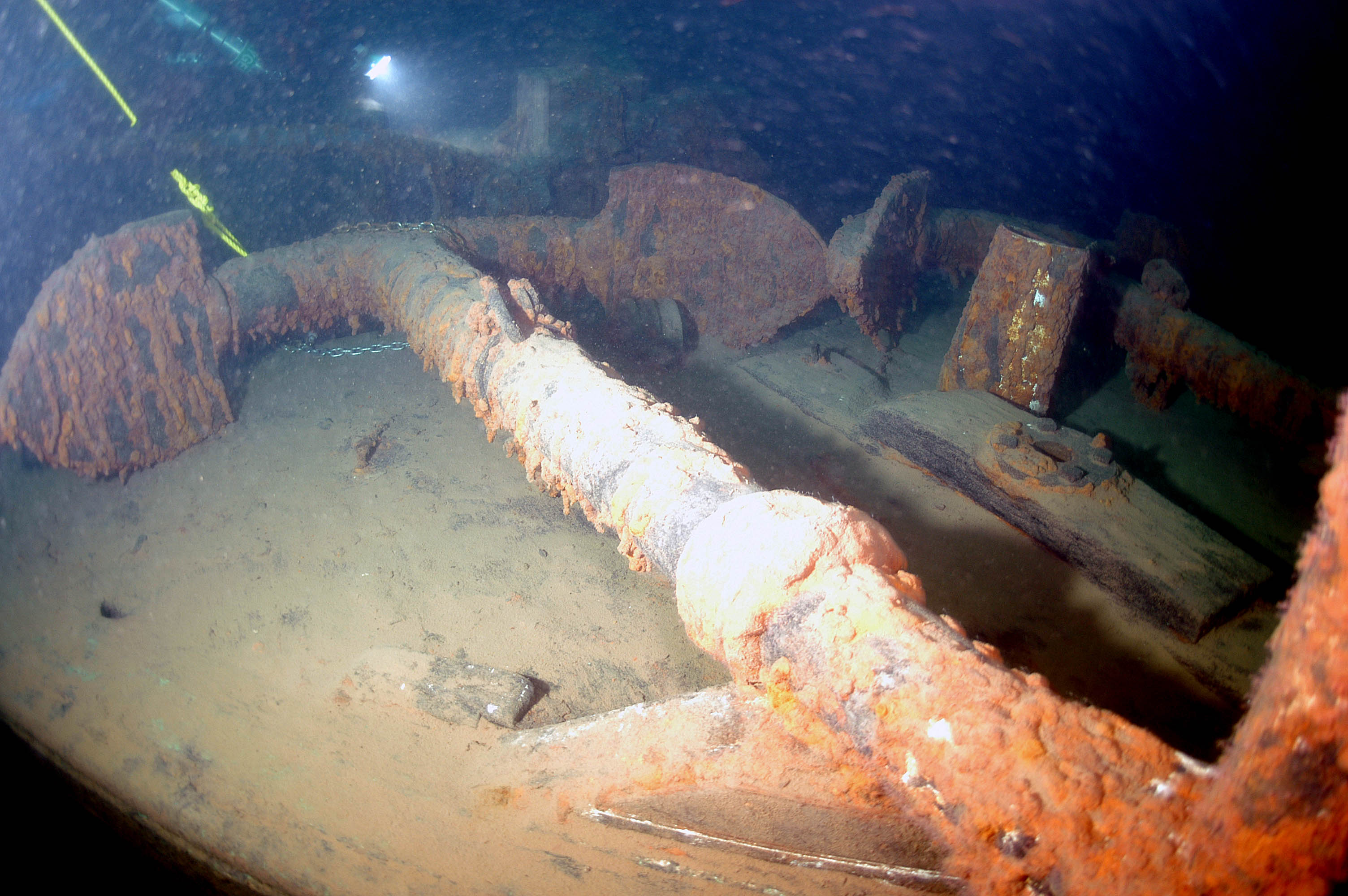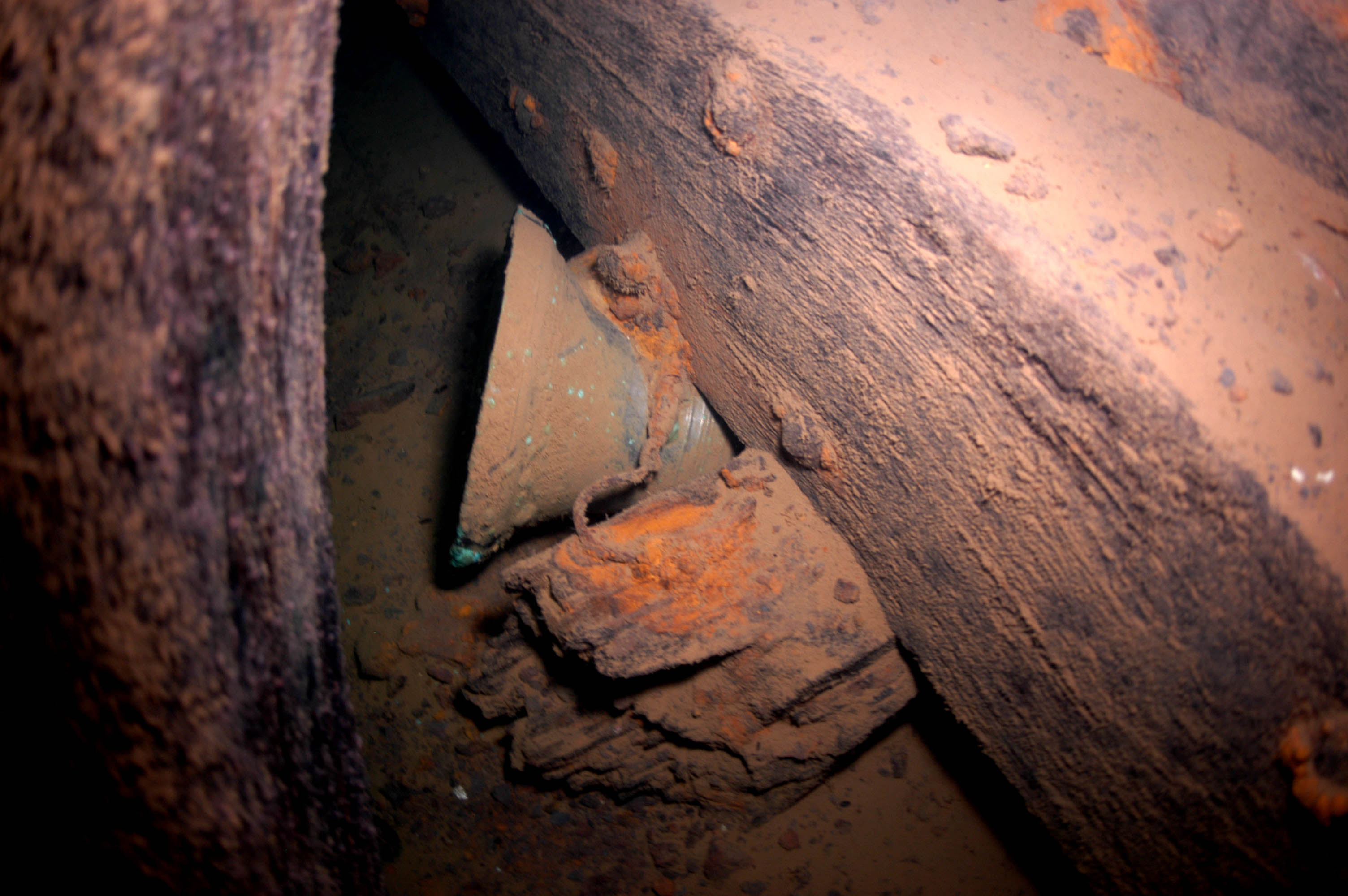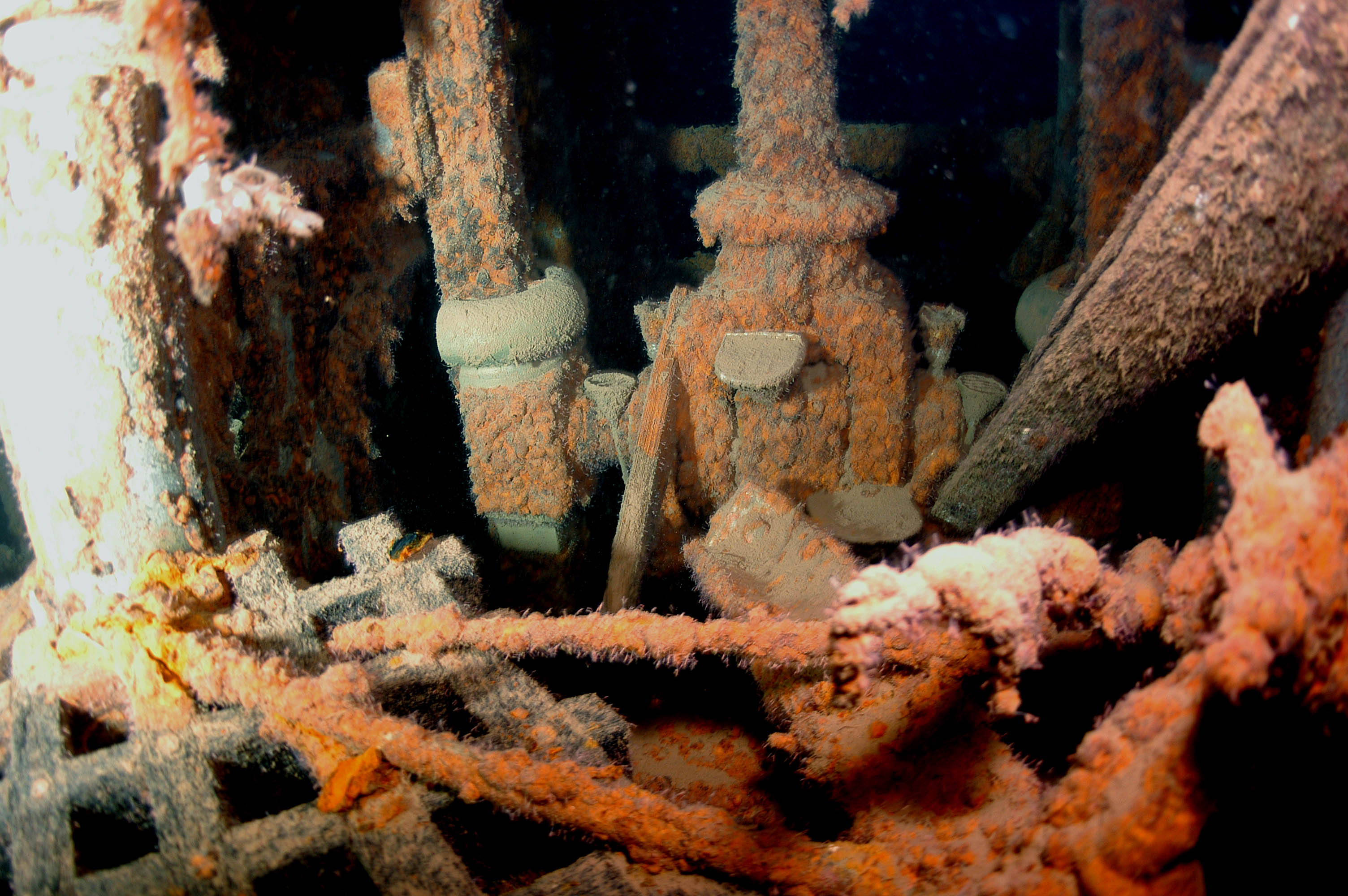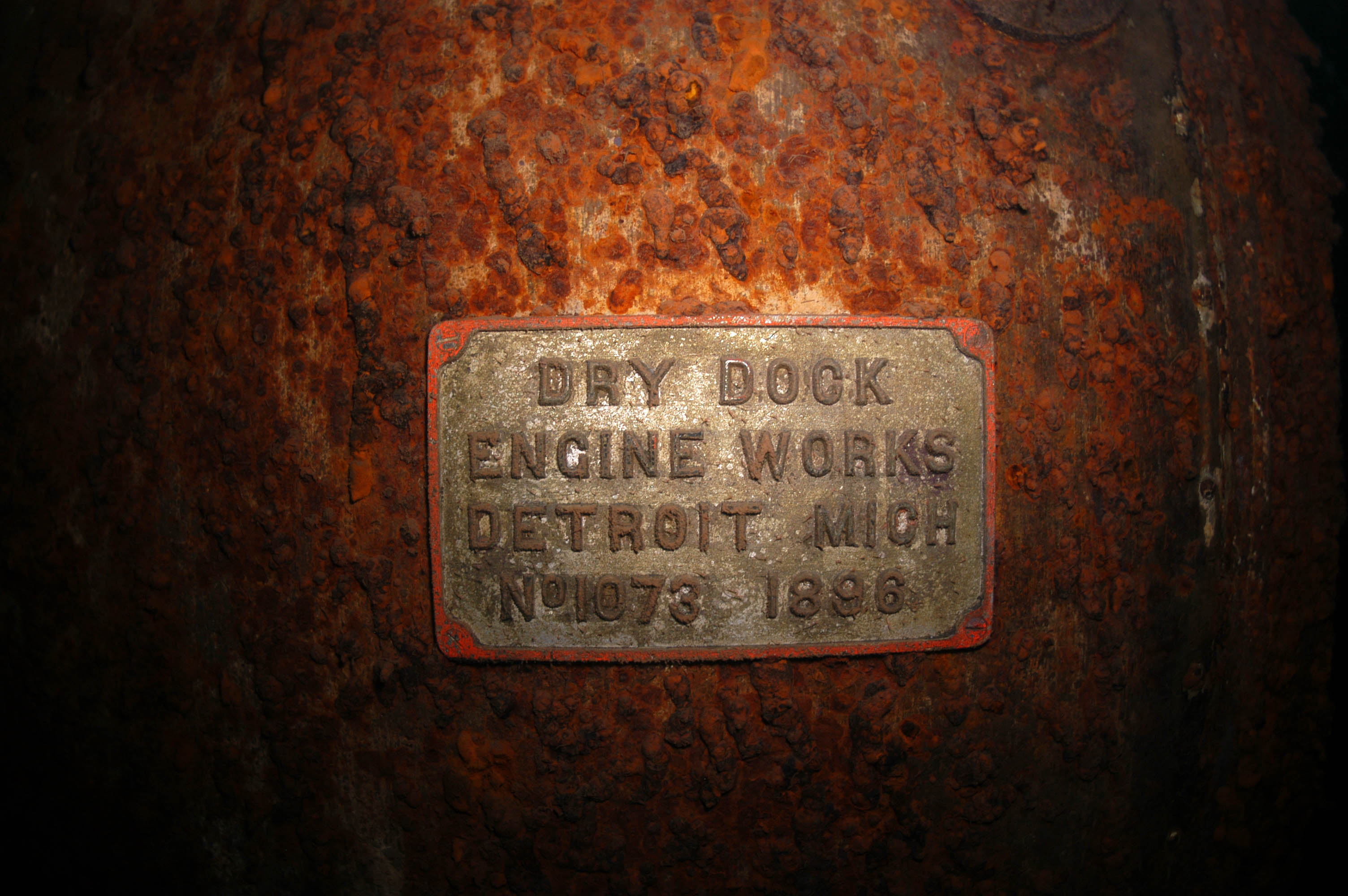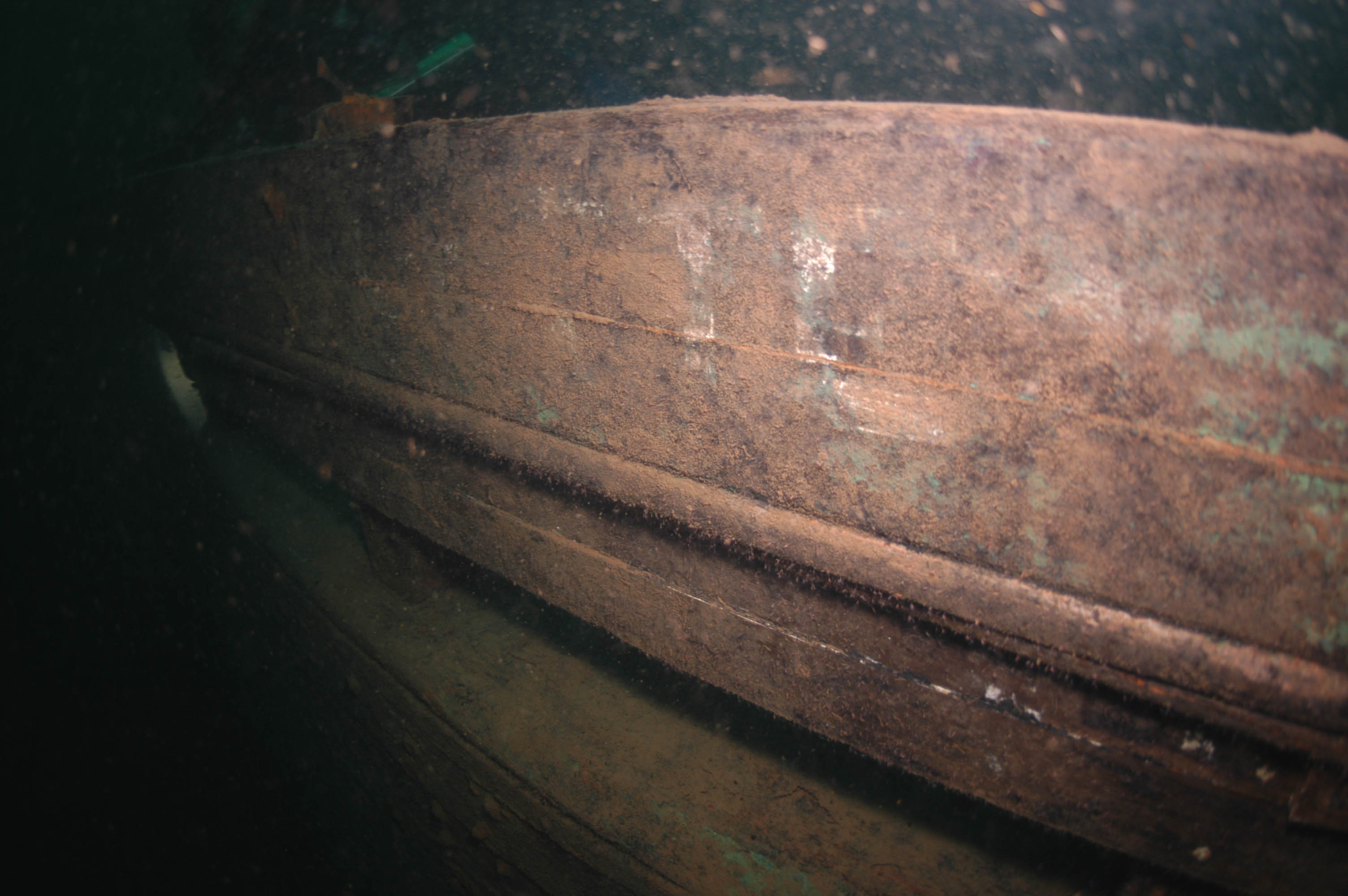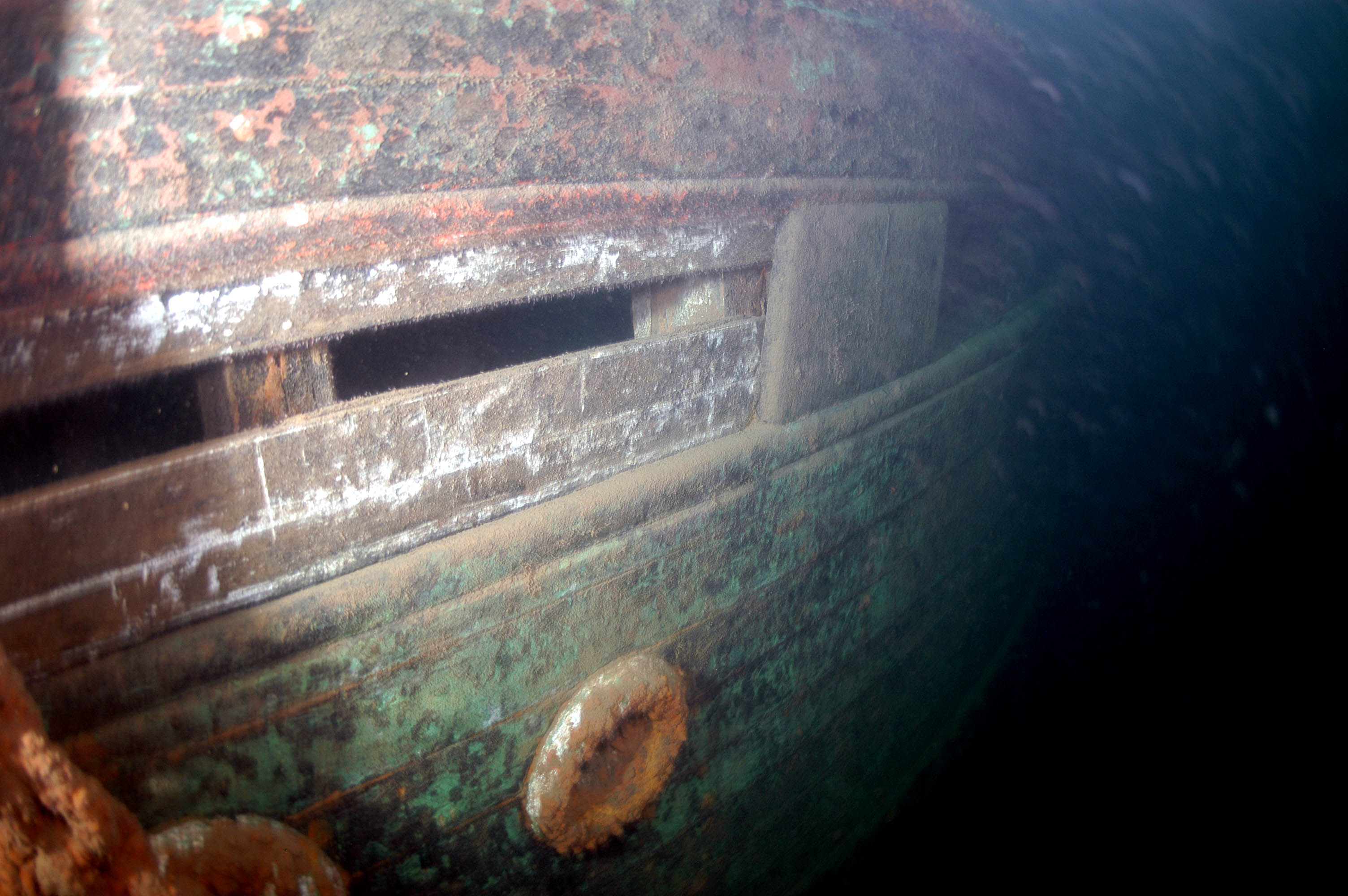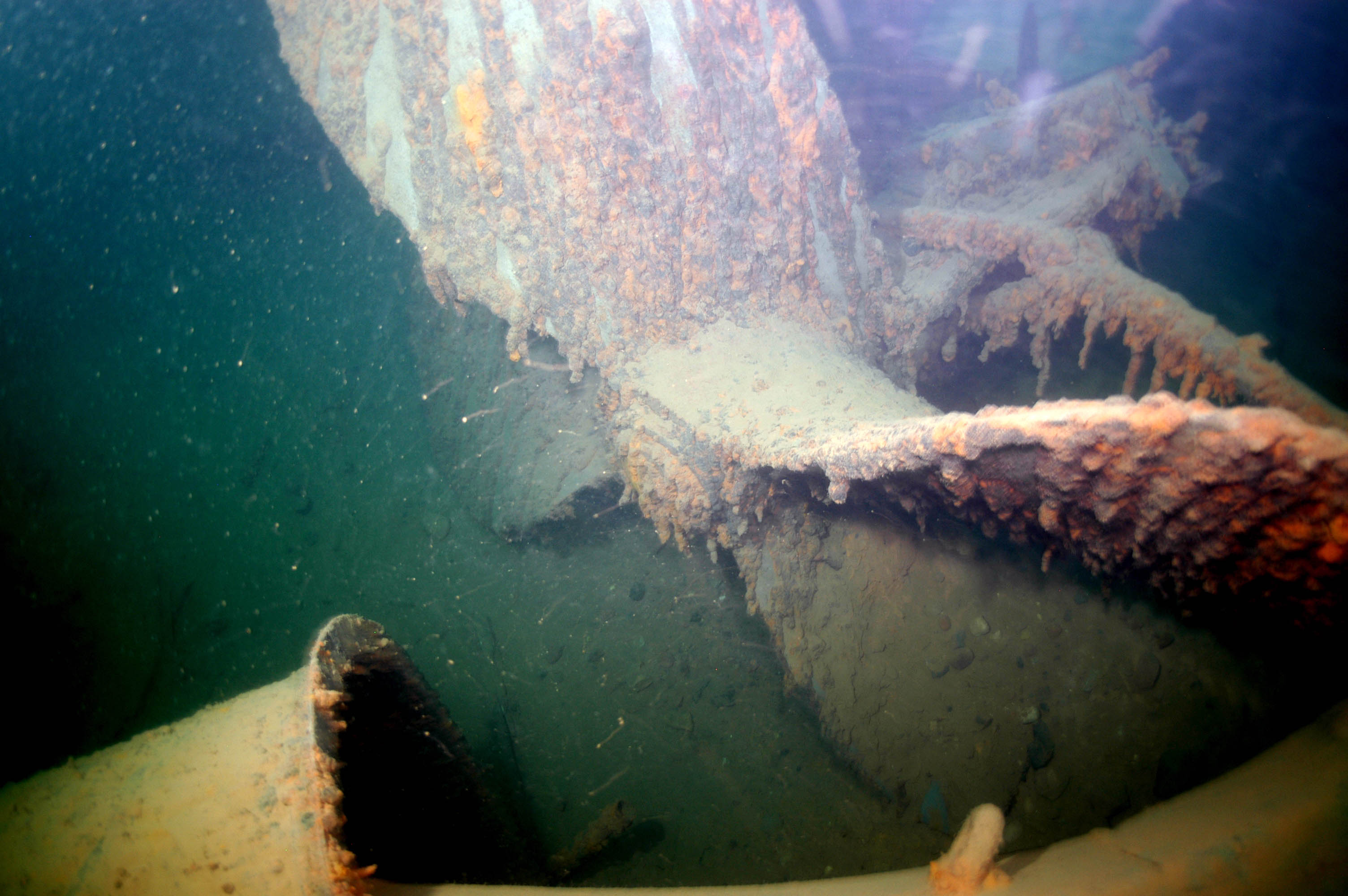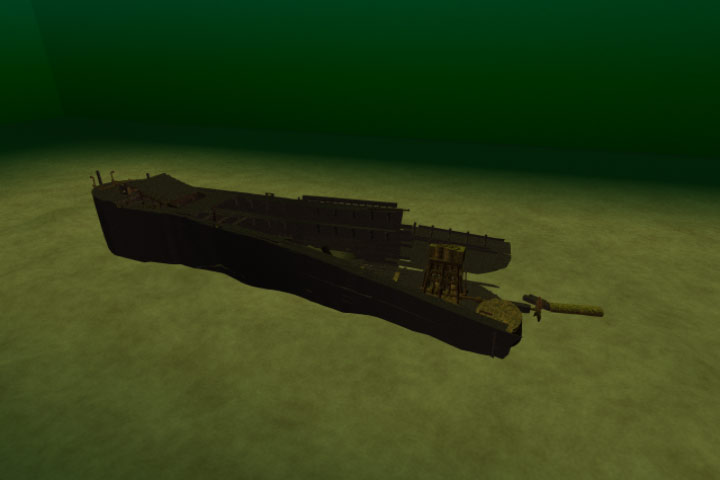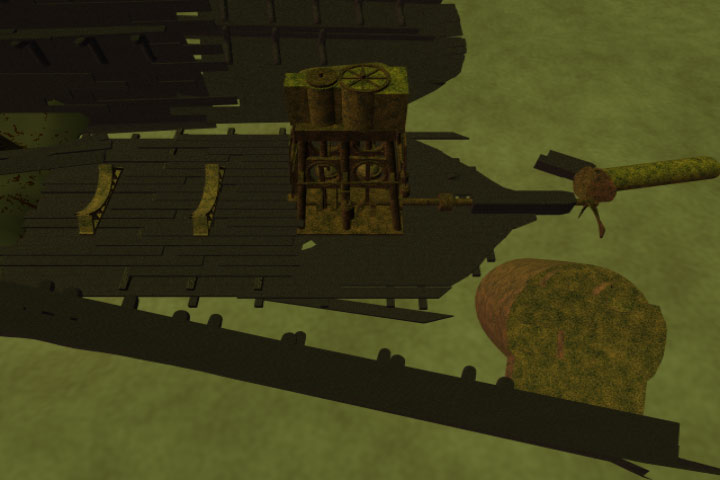Service History
The wooden hull bulk freighter
Marquette was built in 1881 by George Presley & Company at Cleveland, Ohio for the Republic Iron Company and originally named
Republic. The name was changed to
Marquette on August 5, 1890. The
Marquette was one of a transitional class of Great Lakes bulk freighters that began to employ innovative hull strengthening technologies to accommodate greater gross tonnage and longer hulls, while preserving stability. Originally, the ship had three masts, and it carried the canvas for the masts, but the sails were used more for stability rather than a significant source of power. The
Republic was built in the waning days of the wooden bulk freighter era on the Great Lakes: the demand for larger payloads drove shipbuilders to design longer hulls.
While the
Republic handled its maiden voyage well and was awarded the highest rating of A1 upon insurance registration, it blundered onto Whitefish Point on Lake Superior during only its second voyage. This would occur again a year later, in 1882, both times the
Republic had vessels in tow. Luck turned after this, as the
Republic had several relatively trouble-free seasons, during which it made a regular run from Cleveland, Ohio, to Marquette, Michigan, variously towing the barges
George Worthington,
Grace Holland, and
James Couch (Labadie 2006).
On August 5, 1890, the
Republic was renamed
Marquette by authorization of the Commissioner of Navigation, according to records by the United States Bureau of Navigation. This was done to accommodate the Republic Iron Company's new flagship, a 365-ft steel bulk freighter launched in the spring of 1890. The
Marquette was classed down to A2 rating and reports at the time suggested some hull rot and general deterioration. It remained in-service of the Republic Iron Company until April 6, 1892, when it was sold to Cleveland parties affiliated with the J.C. Gilchrist fleet.
Over the winter of 1895-1896, the
Marquette received a new boiler and steam engine. During major repairs in 1898 at Cleveland, the
Marquette's appearance was modernized: the center mast was removed completely, and the topmasts were removed fore and aft. Its old cupola pilothouse was replaced with a modern square house. However, as years went on, the ship's value continued to drop as it showed its age. It was becoming expensive to operate and was nearing the bottom of the Gilchrist roster when the 1903 season began.
Final Voyage
The
Marquette was lost under mysterious circumstances in October 1903 while hauling a cargo of iron ore out of Ashland, Wisconsin. The lake was reportedly calm when the steamer began leaking with no obvious cause. Although it foundered rapidly, the entire crew was able to escape. It was one of six vessels to be lost by the owner, J.C. Gilchrist in the 1903 season, prompting speculation that it may have been scuttled for financial reasons. The
Marquette was a total loss, the vessel itself was valued at $65,000 and the cargo $50,000.
A 1903 article of the
Milwaukee Sentinel reported the incident. "The
Marquette had arrived at Ashland, Wisconsin, light with no consort to take on a cargo of iron ore. On Wednesday, 14 October at 4:00 PM, she completed loading 1319 tons of ore at the Central Ore Dock and 700 tons of ore at the Northwestern Ore Dock. The
Marquette was loaded near capacity when she departed for Cleveland. She headed out along the shipping lanes and made good time. At around midnight, the crew reported to Captain Caughill that the ship was taking on water from an unknown source. The captain went below deck and found that the water was entering at an alarming rate. He ordered the pumps started and head to Michigan Island, the nearest land, which he judged to be about 25 miles away. As the ship raced for the island, she settled further into the water, slowing her progress with each passing minute. By 2:45 Am, the situation began to look grim. Captain Caughill advised most of the 13-man crew to take to the lifeboats, leaving only himself, the second engineer, the second mate and a watchman to guide the ship to the beach. The ten men who took to the lifeboats began rowing for Michigan Island, some five miles away. On board the
Marquette, the four remaining men readied a lifeboat in case the
Marquette should founder before reaching shore. Scarcely an hour had passed when the vessel began to founder rapidly. the men took the lifeboat and pulled away from the wreck just in time to avoid her suction vortex as she plunged for the bottom" (
Milwaukee Sentinel, 1903).
Today
In the fall of 2004, the Great Lakes Shipwreck Preservation Society (GLSPS) located the remains of the
Marquette in deep water off of Michigan Island in Lake superior and in 2006 GLSPS members documented the wreckage. The
Marquette lies in 215 feet of water five miles east of Michigan Island, Lake Superior. Michigan Island was the
Marquette's last reported destination in an attempt to beach the foundering vessel, but today the wreckage lies on a heading of 135 degrees, facing south east, away from Michigan Island.
The
Marquette's current condition is evidence of the vessel's rather violent descent. The
Marquette's entire superstructure was torn free during the sinking, and today the vessel's hull is progressively broken from bow to stern. Despite the hull's broken nature, many large hull structures remain intact but are opened up enough to allow examination.
